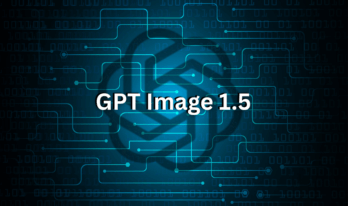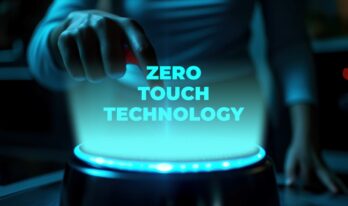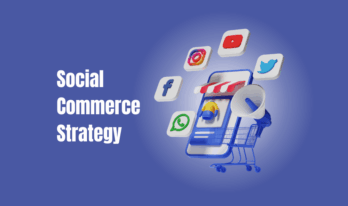Effective business decisions have always been result of accurate data.
Business intelligence refers to the use of technology as well as the practices that are used for the collection and analysis of business information.
An investment in business intelligence is giving companies leverage to achieve efficiency in maintaining the standards for running the business effectively.
The estimated market growth of $29.48 billion is expected for the business intelligence market by 2022.
The mobile business intelligence market is expected to take a leap from $4,103 million in 2016 to $15,990 million by 2023.
Real-Life Examples of Business Intelligence Use Cases Being Implemented
HelloFresh is a Berlin-based food subscription company that was having trouble with its digital marketing report time. This was translating into a poor customer conversion rate.
MapR Technologies helped HelloFresh perform deeper analytics on data.
Earlier, the reporting, which included data gathering and feedback by customers, was done manually at HelloFresh, which took a lot of time.
But now with the help of MapR technologies, the overall reporting process was automated. This included every department, starting from data collected from various sources to customer feedback.
This platform thus enabled HelloFresh to improve customers' touchpoints. This, in turn, helped them to be ready in advance for any demand that customers might make in the near future.
So with the help of this platform, they were able to improve their supplies as well as demands, thereby optimizing the customer's experience too
Also Read: Future of Business Intelligence in 2020 & Beyond
REI is an American, outdoor-based retail corporation that provides services related to outdoor adventures.
REI was finding it difficult to keep track of membership metrics, including acquisitions, retentions, and activations. This adversely impacted their ability to make profitable decisions.
PivotLink came to the rescue of REI, which specializes in providing reporting and analytics solutions for retailers across sales, inventory, human resources, etc.
PivotLink helped REI with the following functions:
-
- Return analysis: Whether to accept a returned item or not was a huge issue with this retail chain.
- Keeping track of stock: Instead of going for guesswork REI now was keeping the stock on the basis of what was growing in demand or what is needed at present.
- Evaluations: Various evaluations were now being done in order to have a clear picture of what was being productive and vice versa.
With the help of this, REI was able to achieve a 9% increase in sales and a 1.6% increase in profits because of all these considerations.
Business Intelligence Use Cases: Coca-Cola Optimized its Daily Sales Report With the Help of Tableau
Coca-Cola, which happens to have a market cap of $232.32 billion, was having an issue to maintain reports for their sales vertical as the whole reporting process was done manually.
A beverage giant that was generating tons of data from different systems to amalgamate the same in one dashboard, was finding it challenging to keep a record of the daily reports.
However, they opted for Tableau, which helped them in creating separate dashboards for every task.
With the help of Tableau’s automatic refreshes, they were able to get updated reports.
Tableau helped them in analyzing details of various departments through their multiple dashboards.
Coca-Cola used the same analytical tool Tableau for the mobile for salespeople, who were earlier spending the majority of time in analyzing figures.
Salespeople were now getting timely updates as well as now they were able to update the data from their end also with just a click away.
This thus saved a lot of manual time used for reporting and analyzing.
This restaurant giant, having a presence in 2,500 locations, was facing issues in having a unified view of their restaurants' performances.
Smartbridge came to the rescue of Chipotle.
It started by doing a primary interview with every staff member of Chipotle to have a 360-degree view of the issue, Chipotle was facing in operating its restaurant chains.
Smartbridge proposed a mobility concept that would give Chipotle easy access to the information related to the staffing model and others.
Smartbridge quickly amalgamated Chipotle’s ready data with the MicroStrategy platform to present a pictorial view of their daily reports.
Impact of the same was seen in areas like:
- Convenience: Easy troubleshooting of any Chipotle restaurant irrespective of their location.
- Communication: Any business information could be easily made available at any chain with just one click.
- Evaluations: Performance evaluation of the overall chain could be done easily now.
Des Moines had more than 60 schools at one point in time.
They wanted to keep the record of test results under fields like grades, age, etc.
For them, it was becoming difficult to manage the reports from various branches and stores in a cohesive manner as well as to report the same in a timely manner.
InterWorks jumped to the rescue of Des Moines.
They started collecting the data related to students from every possible vertical, whether from schools or the demographic data present.
By mixing the same, a new database solution was implemented.
To have a graphical explanation of the same, InterWorks used Tableau for analysis purposes.
Des Moines was able to interpret the combined data easily with the help of dashboards created by InterWorks with filtering options.
With filtering options, they were now able to evaluate student data from various segments.
Allrecipes wanted to keep a close eye on the changing preferences of the customers related to food.
More than a billion people visit the Allrecipes website every year.
With the help of Tableau, it became more accessible for the marketing teams of Allrecipes to have an easy understanding of customer preferences in terms of food.
With Tableau, they were able to do so by keeping a close watch on the updates they received through Tableau.
Tableau helped Allrecipes in the following ways:
-
- Understanding the needs of customers.
- Getting notified of emerging trends.
- Because of Tableau’s easy dashboard, they were able to amalgamate the data from different sources like Adobe Marketing Cloud and Comscore to have a better understanding.
Lufthansa had an issue with the reporting system as every department of theirs had its own reporting system.
Since the reports from different departments were analyzed manually, it had an adverse effect on their efficiency.
Lufthansa needed a uniform group of reporting system.
Tableau was considered for this purpose, but for the sales department only. Later the same opted for every department of Lufthansa.
With Tableau coming on-board, Lufthansa noted down certain changes.
-
- Lufthansa’s efficiency rose by 30%.
- Users could connect to every data source for a better understanding of the data.
- The automated reporting process saved a lot of time, which was the main issue.
- Lufthansa was not dependent on its IT department anymore, as Tableau had made it independent in its functioning.
Conclusion: Business Intelligence Use Cases
Apart from simplifying issues for the above-mentioned customers, business intelligence’s use is stretched across various sectors, from finance, marketing, and HR to supply chain.
BI basically aims to provide a clear view of the ongoing business procedures, so as to enhance their performance.
Also Read: Overview and Aspects of Business Intelligence in Marketing




